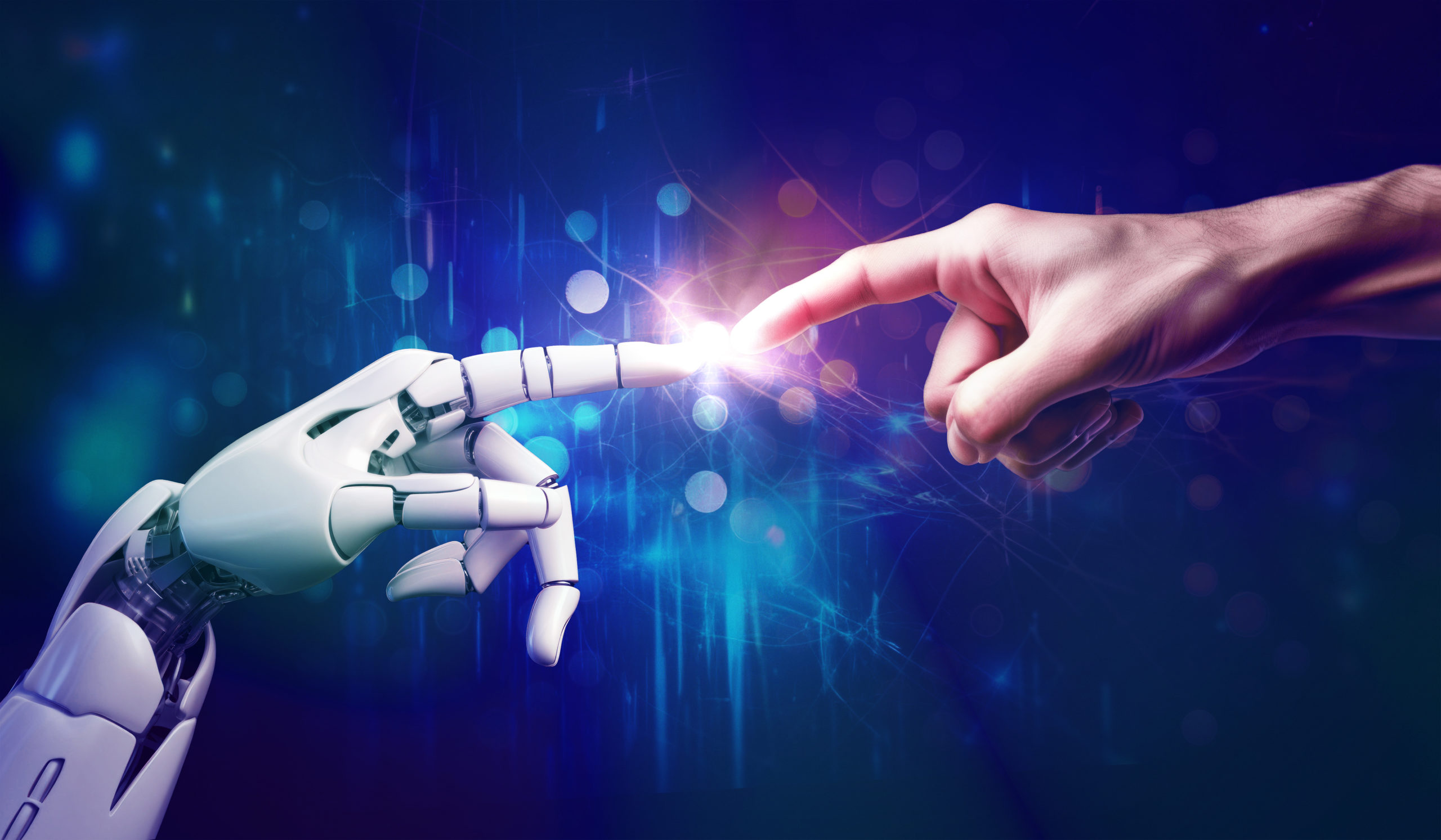
Welcome lovely assistants to a ‘world of AI’ article crafted just for you, Heather and Baker Thompson Associates… and no, no AI was actually used in the writing of this blog! (Shocker, I know!)
So, what’s happened so far?
Since Nov 2022, the media has been a frenzie with talk (or chats) of ChatGPT as it was launched as an open-to-all free online portal. Almost everyone tried it, some upgraded to the paid for option, and now the dust has settled, the numbers of active users has declined.
I know you’ll probably, like me, have seen this pattern before with things like social media, Webex, and now AI tools are the hot topic… but actually we’ve been using AI for over 10 years.
Cast your mind back to the last time you used Youtube’s auto-subtitles feature, asked your voice-assistant about the weather, or used Google Translate to change some text for an international exec… all AI, and features that have been free to use for the last 10 years plus.
Ok Liz, but what *Exactly* is AI?
Let’s roll back a bit, there’s a lot of jargon in this sector, and I like to break it down for people, AI stands for Artificial Intelligence. It’s 1 of 3 levels of “intelligence”, with the other 2 being “Machine Learning” (the human teaching the computer/tool), and “Deep Learning” (where the computer teaches itself without any human intervention). AI is the first of the levels, which is created to carry out tasks, that typically require human intelligence or engagement.
Not just ChatGPT hey?
You’ll understand by now that AI is a wide-ranging resource, that is not just ChatGPT. ChatGPT is one of may NLPs (Natural Language Processors) – others include Bard/Gemini, IBM Watson, and my personal favourite Pi. These all work with text prompts and you as the human, tell the NLP what you want. It’s already “learnt” from scouring the internet, but you can also teach it things too.
*At this point, I must mention, please don’t put any personal data or trade secrets into these tools without checking out the privacy policies. After much conversation ChatGPT creators OpenAI created an “Enterprise” version, after KPMG and the like wanted a safe sandboxed version to put their data into, without it being shared so the tool could “learn” more. If you want to use NLPs for closed data, check out their range of packages and features.
As well as NLPs AI also encompasses…
- Automation (elements of AI inside)
- Machine Visioning (captures and analyses visuals)
- Generative (Text, image and audio generation)
There are some super tools out there, but when generative images based on prompts look like this…

We’ve got a long way to go before the tech catches up with the humans! 😊
Why should I care about AI as an Assistant?
Let’s address the major concern I hear when I’m training and speaking about this stuff at events for EAs, PAs, and VAs… the worry of job replacement. As any professional, you shouldn’t be completely oblivious to the ever-changing world around you, let’s face it businesses do go bust, and do redistribute staff in big organisations… but I would highly recommend thinking of AI as another tool in your toolbox you can pull from when needed, rather than it being a replacement for a human.
AI is only level 1 on the scale of “intelligence”, and humans still need to tell it what to do, what tasks to choose, which order to create the workflow in, what not to do or say… the list is endless, and it’s all human-inputted.
“There is no AI without humans.”
As a caveat, as I don’t want you to sue me in another 10 years’ time… if we get to level 3 where the computers are self-learning, then we should be worrying a bit more. By then, I’m hoping forward-thinking organisations have restructured, and the humans are supporting the ethics of the self-learning machines (that’s where I’d see the jobs being at level 3).
So hopefully I’ve alleviated some of the worry with that, not let’s turn to why we should think about integrating AI with what we are doing now!
Well, as assistants, you are the go-to people, the problem-solvers, the get-stuff-done team, who always seem to know the right bit of info, at the right time… you can use AI to speed up some of your research tasks, automate your repetitive workflows, summarise meeting notes, translate conversations.. all at the click of a button… why would you want to do any of that manually?!
This can then free you up for the more human-focus tasks, that require your people skills computers will never live up to.
I’m In! What first?
Brilliant! I love your enthusiasm! (Ok, so some of you are a bit worried about the time it takes to learn *yet another thing*, but trust me, it could save you so much time!)
First off, reflect on any of those repetitive tasks you do every day that you think “yeah, I could delegate that to my AI assistant to do!” – how many hours per week do you spend on that tasks, what steps are involved, how could you see this being streamlined or automated?
Are there any softwares you’re using (or not) that you’d like to spend some time looking at the latest features on? On average we only us 36% of the features of any software or programme, so before you start looking for a new tool, check out what “integrations” you already have available within the softwares you already use! Chance are, you already have a new feature in that software you use, that could work some AI magic!
I’ve created a very simple one-page Digital Review Tool, which is loved for it’s simplicity, but also the helpful prompts you can use to reflect on, and/or take to your next meeting with the team, to get everyone thinking about how to streamline some of the workflows and processes too!
Here’s the link to download your free copy – https://www.productivityclub.co.uk/digital-review-tool
What Next?
Once you’ve had a go at some tools, a new automated workflow or a new resource, make sure you celebrate the wins!
I love sharing my stats from last year’s review of using an AI-driven calendar booking software, IT told ME, that I avoided 343 emails (based on an estimated 7 emails per meeting) and saved 13 hours of back-and-forth (based on an estimated 15 minutes per meeting). I’m so inspired and motivated that it saved me THAT much time in a year, but also that it automatically told me that data too! It spurs me on to see what else I can use AI for! And what do I do with that new free time? I *learn* more about AI and the options available that might work for me and my businesses… investing the time saved, back into the business… (a great strategy to get buy-in if you’re getting the groans from manager)… feel free to send them a link to this!
What Now?
To get started, do check out the Digital Review Tool, or simply reflect on…
What workflows or repetitive processes could you get some AI assistance with, that could give you days back of time a year?
Liz Hardwick is a Digital Productivity Specialist, Professional Speaker, Trainer and Tech Founder, and has been sharing her expertise and experiences of “harnessing digital for human benefit”, for over 20 years through engaging talks, trainings and virtual seminars, and via her online Productivity Club.
Described as a forever-smiling, down to earth, and approachable expert, she is known for advocating a strong work life balance, using Digital to solve human problems, and loves to demystify technology so everyone can be digitally included.
Liz has been recognised for her achievements in TechWomen100, TechWorld’s Top 111 UK Women in Tech Speakers, and DigitalLeadersUK100. https://lizhardwick.co.uk/bio/
https://www.linkedin.com/in/lizhardwick/

